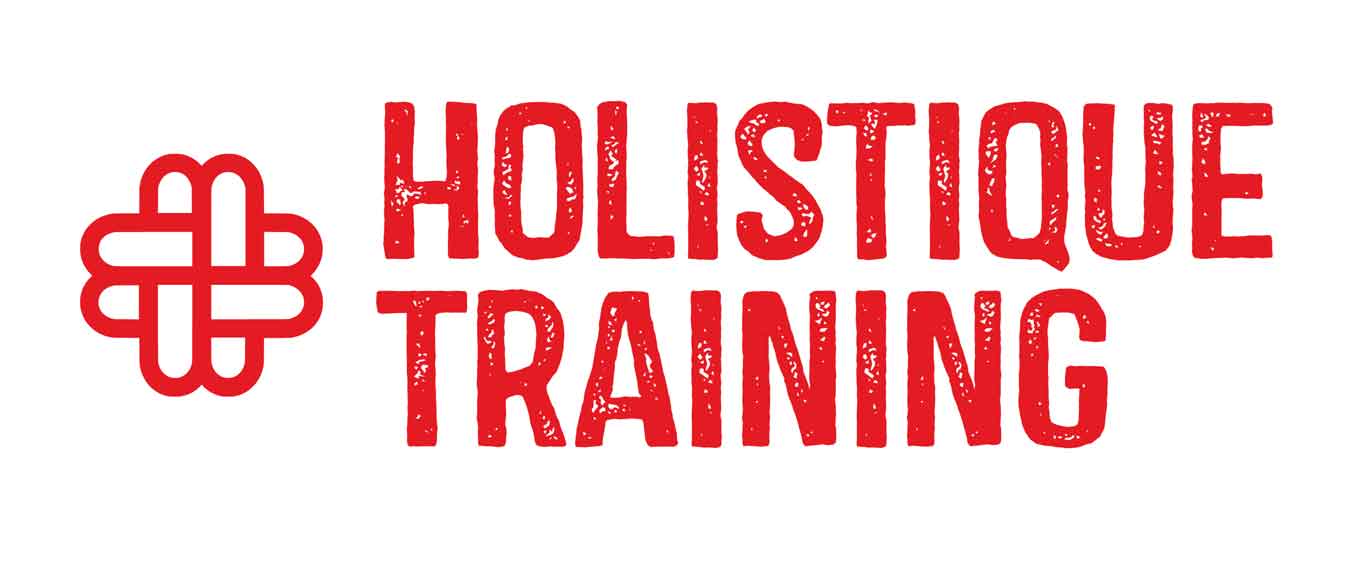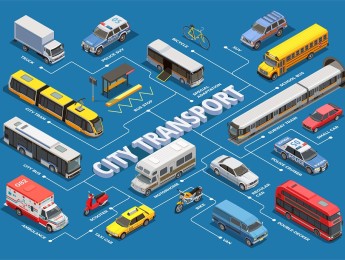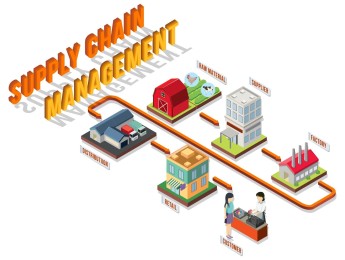- Table of Contents
- Introduction
- What is a Chart of Accounts (COA)?
- Why is the COA Important in Finance?
- Facilitates Accurate Financial Reporting:
- Enhances Transparency and Accountability:
- Supports Compliance with Regulations:
- Aids in Budgeting and Forecasting:
- Facilitates Strategic Decision-Making:
- Improves Operational Efficiency:
- Enables Performance Measurement:
- How a COA Works
- Organizational Framework
- Categorization of Transactions
- Recording Transactions
- Double-Entry Accounting System
- Financial Reporting
- Customization and Scalability
- Integration with Accounting Software
- Regular Maintenance and Updates
- What is the COA Structure?
- 1- Assets:
- 2- Liabilities:
- 3- Equity:
- 4- Revenue:
- 5- Expenses:
- Hierarchy and Numbering System:
- Customization:
- Example of a COA
- Does Your Business Need a COA?
- Improved Financial Organization:
- Enhanced Financial Reporting:
- Essential for Compliance:
- Facilitates Budgeting and Forecasting:
- Supports Strategic Decision-Making:
- Scalability for Growing Businesses:
- Operational Efficiency:
- Useful for All Business Types:
- Chart of Accounts Best Practices
- 1- Simplicity and Clarity
- 2- Logical Organization
- 3- Flexibility and Scalability
- 4- Integration with Technology
- 5- Consistency Across Departments
- 6- Compliance and Accuracy
- 7- Focus on Reporting Needs
- 8- Customization for Business Type
- Conclusion
Introduction
Embarking on the journey of managing a business involves navigating through various financial landscapes, one of which is the Chart of Accounts (COA). This blog post aims to unravel the intricacies of the COA, explaining its significance, structure, and practical application in business finance. Whether you're a seasoned entrepreneur or a budding business owner, understanding the COA can empower you to make informed financial decisions, ensure compliance, and streamline reporting processes.
What is a Chart of Accounts (COA)?
At its core, the Chart of Accounts is a systematic listing of all accounts used by a business in its financial transactions. Think of it as a financial blueprint that categorizes every transaction into distinct buckets—assets, liabilities, equity, revenue, and expenses. Each account within the COA is assigned a unique code or number, facilitating easy identification and tracking. This organization is crucial for maintaining clarity and accuracy in financial reporting.
Why is the COA Important in Finance?
The Chart of Accounts (COA) is a fundamental component of financial management that serves multiple critical functions within a business. Its importance in finance extends beyond mere categorization of transactions; it is integral to the financial integrity, strategic planning, and operational efficiency of any organization. Here’s why the COA is indispensable in finance:
Facilitates Accurate Financial Reporting:
The COA provides a structured framework that ensures all financial transactions are recorded consistently and accurately. By categorizing transactions into specific accounts, businesses can produce precise financial statements, such as balance sheets, income statements, and cash flow statements. These documents are essential for assessing the financial health of the business, attracting investors, and securing loans.
Enhances Transparency and Accountability:
A well-organized COA promotes transparency by making it easier to track where money is coming from and where it is going. This transparency is crucial for internal stakeholders, such as management and employees, as well as external parties, including investors, auditors, and regulatory bodies. It enables businesses to demonstrate accountability in their financial practices and maintain trust with stakeholders.
Supports Compliance with Regulations:
Businesses are required to comply with various accounting standards and regulations, such as Generally Accepted Accounting Principles (GAAP) or International Financial Reporting Standards (IFRS). A COA ensures that financial records are kept in accordance with these standards, reducing the risk of errors, fraud, and penalties. It simplifies the audit process by providing a clear and organized trail of transactions, making it easier for auditors to verify the accuracy of financial statements.
Aids in Budgeting and Forecasting:
The COA is instrumental in the budgeting and forecasting processes. By providing detailed insights into past financial performance, businesses can create realistic budgets and forecasts that guide future financial planning. It helps identify trends in revenue and expenses, allowing businesses to allocate resources effectively and set achievable financial goals.
Facilitates Strategic Decision-Making:
With a comprehensive COA, businesses can access detailed financial data that informs strategic decision-making. It allows management to analyze the profitability of different products or services, evaluate cost structures, and identify areas for improvement. This information is crucial for making informed decisions about investments, expansions, and other strategic initiatives.
Improves Operational Efficiency:
By organizing financial data into a coherent structure, the COA enhances operational efficiency. It simplifies the process of tracking and managing financial transactions, reducing the time and effort required for bookkeeping. This efficiency translates into cost savings and allows businesses to focus on core operations and growth strategies.
Enables Performance Measurement:
The COA allows businesses to measure financial performance against predefined benchmarks and objectives. By categorizing transactions into specific accounts, businesses can monitor key performance indicators (KPIs) related to revenue, expenses, and profitability. This measurement is essential for evaluating the success of business strategies and making necessary adjustments to achieve financial goals.
Below is a table that illustrates some key performance indicators (KPIs) that businesses can monitor using a well-structured Chart of Accounts (COA):
KPI | Description | Purpose |
Revenue Growth | Measures the increase in sales over a period | Evaluates business expansion and market demand |
Expense Ratio | Compares expenses to total revenue | Assesses cost efficiency and operational control |
Profit Margin | Calculates net income as a percentage of revenue | Determines profitability and financial health |
Cash Flow | Tracks inflows and outflows of cash | Ensures liquidity and operational stability |
Return on Equity | Measures net income generated per shareholder equity | Evaluates efficiency in using investor funds |
Debt-to-Equity | Compares total debt to shareholder equity | Assesses financial leverage and risk exposure |
In summary, the Chart of Accounts is a vital tool in finance that underpins accurate financial reporting, ensures compliance, aids in strategic planning, and enhances operational efficiency. Its importance is reflected in its ability to provide clarity, transparency, and accountability in financial management, ultimately contributing to the success and sustainability of a business.
How a COA Works
The Chart of Accounts (COA) is a foundational element in the financial architecture of a business, serving as the organized framework for recording and categorizing financial transactions. Understanding how a COA works is essential for businesses to maintain accurate and efficient financial records. Here’s a detailed look at how the COA operates within a business's financial system:
Organizational Framework
At its core, a COA is a structured list of all the accounts used by a business to record financial transactions. Each account in the COA is assigned a unique identifier, typically a number or code, which facilitates easy tracking and organization. This framework ensures that every transaction is recorded in a consistent manner, making it easier to retrieve and analyze financial data.
Categorization of Transactions
The COA categorizes transactions into distinct groups, such as assets, liabilities, equity, revenue, and expenses. Each category is further divided into specific accounts that reflect the nature of the transaction. For example, under assets, you might find accounts for cash, accounts receivable, and inventory. This categorization helps businesses track different types of financial activities and understand their financial position.
Recording Transactions
When a financial transaction occurs, it is recorded in the appropriate account within the COA. For instance, when a company makes a sale, the transaction is recorded in the revenue account. Similarly, when an expense is incurred, it is recorded in the corresponding expense account. This systematic recording ensures that all financial activities are captured accurately and comprehensively.
Double-Entry Accounting System
The COA operates within the framework of the double-entry accounting system, where every transaction affects at least two accounts. This system ensures that the accounting equation (Assets = Liabilities + Equity) remains balanced. For example, if a company purchases inventory on credit, the inventory account (asset) is debited, and the accounts payable account (liability) is credited. The COA provides the structure needed to implement this system effectively.
Financial Reporting
The COA plays a crucial role in generating financial reports. By organizing transactions into specific accounts, the COA allows businesses to compile accurate financial statements, such as balance sheets, income statements, and cash flow statements. These reports provide insights into the financial health and performance of the business, enabling stakeholders to make informed decisions.
Customization and Scalability
A COA can be customized to meet the specific needs of a business. While there are standard templates available, businesses can modify the COA to include accounts that reflect their unique operations and industry requirements. Additionally, the COA is scalable, allowing businesses to add or remove accounts as they grow or change. This flexibility ensures that the COA remains relevant and useful over time.
Integration with Accounting Software
Modern businesses often use accounting software to manage their COA. These software solutions automate the process of recording transactions, reducing the risk of errors and enhancing efficiency. They also provide real-time insights into financial performance, enabling businesses to monitor their financial activities continuously.
Regular Maintenance and Updates
To ensure accuracy and relevance, the COA requires regular maintenance and updates. Businesses should periodically review their COA to reflect changes in operations, such as new revenue streams or expense categories. Regular updates help maintain the integrity of financial data and ensure that financial reports are accurate and up-to-date.
In summary, the Chart of Accounts is an essential tool for organizing and managing a business's financial transactions. By providing a structured framework for recording, categorizing, and reporting financial activities, the COA enables businesses to maintain accurate financial records, ensure compliance, and make informed strategic decisions. Its integration with accounting systems further enhances its utility, making it a cornerstone of effective financial management.
What is the COA Structure?
The structure of the Chart of Accounts (COA) is a meticulously organized system that categorizes financial transactions into distinct groups. This structure is pivotal for maintaining clarity and consistency in financial reporting, ensuring that every transaction is accurately recorded and easily retrievable. The COA typically comprises five main categories: assets, liabilities, equity, revenue, and expenses. Each category is further divided into specific accounts that reflect the nature of the transactions within that group. Let’s delve deeper into each component of the COA structure:
1- Assets:
Assets are resources owned by the business that have economic value and can provide future benefits. They are typically listed in order of liquidity on the balance sheet, meaning how quickly they can be converted into cash. Asset accounts include:
- Current Assets: These are assets that are expected to be converted into cash or used up within one year. Examples include cash, accounts receivable, and inventory.
- Non-Current Assets: These assets have a longer-term benefit and include property, plant, equipment, and intangible assets like patents or trademarks.
- Fixed Assets: Tangible assets used in the operation of a business, such as machinery and buildings.
2- Liabilities:
Liabilities represent obligations or debts owed by the business to external parties. They are crucial for understanding the financial obligations of the business. Liability accounts include:
- Current Liabilities: Short-term obligations that are due within one year, such as accounts payable, short-term loans, and accrued expenses.
- Long-Term Liabilities: Debts that are due after one year, including long-term loans, bonds payable, and lease obligations.
3- Equity:
Equity accounts capture the owner's interest in the business. They reflect the net worth of the business after liabilities are subtracted from assets. Equity accounts include:
- Owner’s Equity: Represents the owner's initial investment and any additional capital contributions.
- Retained Earnings: Profits that have been reinvested in the business rather than distributed as dividends.
- Common Stock: Represents ownership shares issued to shareholders.
4- Revenue:
Revenue accounts record income generated from business operations. These accounts are crucial for assessing business growth and profitability. Revenue accounts include:
- Sales Revenue: Income from the sale of goods or services.
- Service Revenue: Income earned from providing services.
- Interest Income: Earnings from interest-bearing investments.
5- Expenses:
Expense accounts track costs incurred in the course of business operations. Managing expenses is vital for maintaining profitability and efficiency. Expense accounts include:
- Cost of Goods Sold (COGS): Direct costs attributable to the production of goods sold by the company.
- Operating Expenses: Costs related to the day-to-day operations, such as rent, utilities, and salaries.
- Depreciation Expense: Allocation of the cost of tangible assets over their useful lives.
Hierarchy and Numbering System:
The COA is typically organized in a hierarchical structure, where each main category is assigned a range of numbers. For example, assets might be numbered from 1000 to 1999, liabilities from 2000 to 2999, and so on. Within each category, individual accounts are assigned specific numbers, which helps in easy identification and tracking. This numbering system not only facilitates organization but also aids in the integration of the COA with accounting software, allowing for automated processing and reporting.
Customization:
While the basic structure of the COA remains consistent, it can be customized to meet the specific needs of different businesses. Industry-specific accounts can be added, and existing accounts can be modified to better reflect the financial activities of the business. This flexibility ensures that the COA remains relevant and useful, providing a comprehensive view of the business's financial landscape.
In summary, the structure of the Chart of Accounts is designed to provide a clear and organized framework for recording and categorizing financial transactions. By systematically grouping transactions into assets, liabilities, equity, revenue, and expenses, the COA ensures that businesses can maintain accurate financial records, facilitate reporting, and make informed strategic decisions.
Example of a COA
To illustrate the concept further, consider a small retail business. Its COA might include the following accounts:
- Assets: Cash (101), Accounts Receivable (102), Inventory (103), Equipment (104)
- Liabilities: Accounts Payable (201), Loan Payable (202)
- Equity: Owner's Capital (301), Retained Earnings (302)
- Revenue: Sales Revenue (401), Service Revenue (402)
- Expenses: Cost of Goods Sold (501), Rent Expense (502), Utilities Expense (503), Salaries Expense (504)
Each account is numbered systematically to facilitate easy tracking and reporting. This structure allows the business to monitor its financial position and performance efficiently.
Account Category | Account Name | Account Number | Description |
Assets | Cash | 101 | Funds available for immediate use |
| Accounts Receivable | 102 | Money owed by customers |
| Inventory | 103 | Goods available for sale |
| Equipment | 104 | Physical assets used in operations |
Liabilities | Accounts Payable | 201 | Amounts owed to suppliers |
| Loans Payable | 202 | Outstanding loan obligations |
Equity | Owner’s Capital | 301 | Initial investment by the owner |
| Retained Earnings | 302 | Profits reinvested in the business |
Revenue | Sales Revenue | 401 | Income from goods sold |
| Service Revenue | 402 | Income from services provided |
Expenses | Cost of Goods Sold | 501 | Direct costs of goods sold |
| Rent Expense | 502 | Costs for leasing business premises |
| Utilities Expense | 503 | Costs for electricity, water, etc. |
| Salaries Expense | 504 | Compensation for employees |
This table provides a snapshot of how a COA is structured, with each account assigned a unique number for easy identification and tracking. The accounts are organized into categories that reflect the financial activities of the business, enabling efficient management and reporting of transactions.
Does Your Business Need a COA?
The necessity of a Chart of Accounts (COA) for a business largely depends on its size, complexity, and the nature of its operations. However, in most cases, having a COA is highly beneficial and often essential for effective financial management. Here’s an exploration of why your business might need a COA:
Improved Financial Organization:
A COA provides a structured framework for organizing financial transactions. By categorizing transactions into specific accounts, businesses can maintain clear and organized financial records. This organization is crucial for businesses of all sizes, as it simplifies the process of tracking financial activities, ensuring that all transactions are recorded accurately and consistently.
Enhanced Financial Reporting:
Accurate financial reporting is vital for assessing the health and performance of a business. A COA facilitates the generation of detailed financial statements, such as balance sheets, income statements, and cash flow statements. These reports provide insights into the business's financial position, helping stakeholders make informed decisions regarding investments, expansions, and other strategic initiatives.
Essential for Compliance:
Businesses are required to adhere to various accounting standards and regulations, such as Generally Accepted Accounting Principles (GAAP) or International Financial Reporting Standards (IFRS). A COA ensures that financial records are kept in accordance with these standards, reducing the risk of errors and penalties. It simplifies the audit process, making it easier for auditors to verify the accuracy of financial statements.
Facilitates Budgeting and Forecasting:
The COA is instrumental in the budgeting and forecasting processes. By providing detailed insights into past financial performance, businesses can create realistic budgets and forecasts that guide future financial planning. This foresight helps businesses allocate resources effectively, set achievable financial goals, and prepare for potential challenges.
Supports Strategic Decision-Making:
With a comprehensive COA, businesses can access detailed financial data that informs strategic decision-making. It allows management to analyze the profitability of different products or services, evaluate cost structures, and identify areas for improvement. This information is crucial for making informed decisions about investments, expansions, and other strategic initiatives.
Scalability for Growing Businesses:
As a business grows, its financial transactions become more complex. A COA is scalable, allowing businesses to add or modify accounts as needed. This flexibility ensures that the COA remains relevant and useful, accommodating changes in business operations and industry requirements.
Operational Efficiency:
By organizing financial data into a coherent structure, the COA enhances operational efficiency. It simplifies the process of tracking and managing financial transactions, reducing the time and effort required for bookkeeping. This efficiency translates into cost savings and allows businesses to focus on core operations and growth strategies.
Useful for All Business Types:
Whether a business is a sole proprietorship, partnership, corporation, or nonprofit organization, a COA can be tailored to meet its specific needs. While smaller businesses might have simpler COAs with fewer accounts, larger businesses often require more detailed and complex COAs to manage their diverse financial activities.
In summary, a Chart of Accounts is a valuable tool for any business seeking to maintain accurate financial records, ensure compliance, and make informed strategic decisions. By providing a structured framework for organizing and categorizing financial transactions, the COA enhances financial reporting, budgeting, and operational efficiency, ultimately contributing to the success and sustainability of the business.
Chart of Accounts Best Practices
Implementing best practices for a Chart of Accounts (COA) is crucial for ensuring that financial records are accurate, comprehensive, and useful for decision-making. Here are some key best practices to consider when creating and maintaining a COA:
1- Simplicity and Clarity
- Keep It Simple: Design the COA to be as simple as possible while still capturing all necessary financial information. Avoid overly complex structures that can lead to confusion and errors.
- Clear Naming Conventions: Use clear and descriptive names for each account to ensure that everyone involved in financial reporting understands what each account represents. This clarity helps prevent misclassification of transactions.
2- Logical Organization
- Categorize Systematically: Organize accounts logically, grouping similar accounts together under main categories such as assets, liabilities, equity, revenue, and expenses. This structure should reflect the nature of the business and facilitate easy navigation.
- Consistent Numbering: Implement a consistent numbering system that aligns with the hierarchy of accounts. This system aids in quick identification and retrieval of information.
3- Flexibility and Scalability
- Allow for Growth: Design the COA to be flexible and scalable. As the business grows or changes, the COA should accommodate new accounts or modifications without disrupting existing structures.
- Regular Reviews: Periodically review the COA to ensure it remains relevant and aligns with current business operations and industry standards.
4- Integration with Technology
- Leverage Accounting Software: Use accounting software to automate the COA, which reduces manual errors and enhances efficiency. Software solutions often provide templates and tools to streamline COA management.
- Ensure Compatibility: Ensure that the COA is compatible with any financial reporting or management systems in use, facilitating seamless integration and data sharing.
5- Consistency Across Departments
- Standardize Across the Organization: Implement a standardized COA across all departments and subsidiaries to ensure consistency in financial reporting. This standardization simplifies consolidation and analysis of financial data.
- Training and Communication: Provide training and clear communication to all relevant personnel to ensure they understand how to use the COA effectively.
6- Compliance and Accuracy
- Adhere to Standards: Ensure that the COA complies with relevant accounting standards and regulations, such as GAAP or IFRS. This compliance is essential for accurate reporting and audit readiness.
- Regular Audits: Conduct regular audits of the COA to verify the accuracy and completeness of financial records, identifying and rectifying any discrepancies.
7- Focus on Reporting Needs
- Align with Reporting Requirements: Design the COA to meet the specific reporting needs of the business. Consider the types of reports required by management, investors, and regulatory bodies, and ensure the COA supports these reporting functions.
- Prioritize Important Accounts: Highlight key accounts that are critical for decision-making, ensuring they are easily accessible and prominently featured in reports.
8- Customization for Business Type
Tailor to Business Needs: Customize the COA to reflect the unique aspects of the business and its industry. While standard templates can be a starting point, modifications may be necessary to capture specific financial activities.
By following these best practices, businesses can create a Chart of Accounts that is efficient, reliable, and capable of providing valuable insights into their financial health and performance. A well-designed COA not only enhances financial management but also supports strategic planning and growth initiatives.
Conclusion
The Chart of Accounts is a cornerstone of effective financial management, offering more than just a catalog of accounts. It provides a structured framework that enhances financial reporting, ensures compliance, and supports informed strategic decision-making. By mastering the intricacies of a COA, businesses can optimize their financial systems, leading to improved operational efficiency and strategic insight.
To fully leverage the potential of your COA, consider enrolling in our course, "Using Excel for Financial & Business Reporting." This course is designed to empower you with the skills necessary to utilize Excel's powerful features for creating and managing a robust COA. You'll learn how to automate financial processes, generate insightful reports, and gain a deeper understanding of your business's financial health.
Whether you're starting a new venture or refining your existing financial practices, our course will provide you with the tools and knowledge to navigate the complexities of business finance. Excel's versatility and functionality make it an ideal platform for managing your COA, allowing you to streamline operations and focus on strategic growth.
Embrace the power of the COA and Excel to transform your financial management practices. With the right tools and expertise, you can drive success and achieve your entrepreneurial goals, ensuring your business thrives in a competitive landscape. Join us in this journey to enhance your financial acumen and elevate your business to new heights.

























